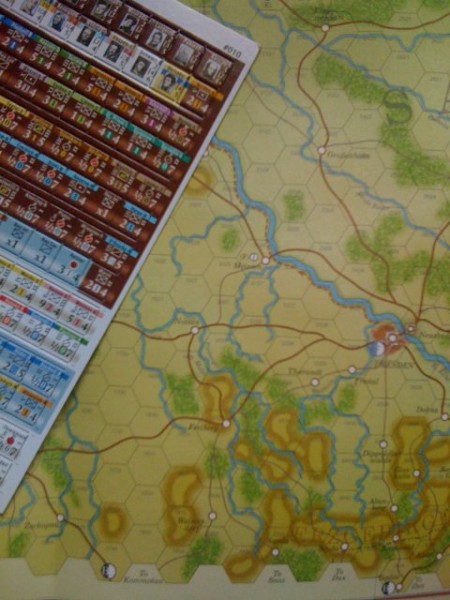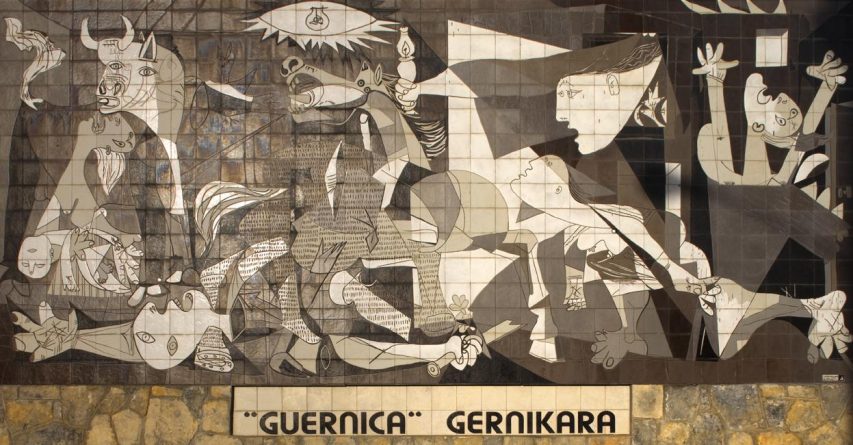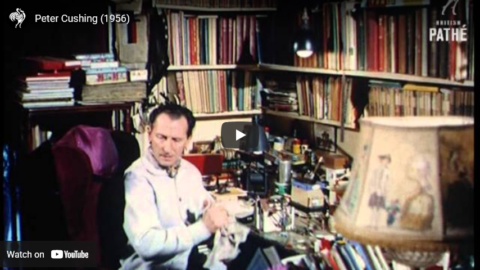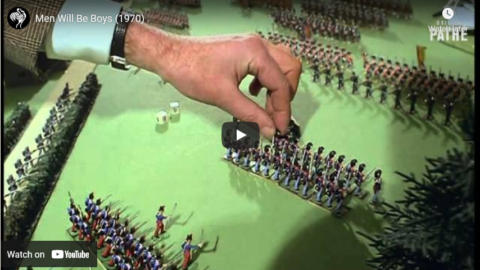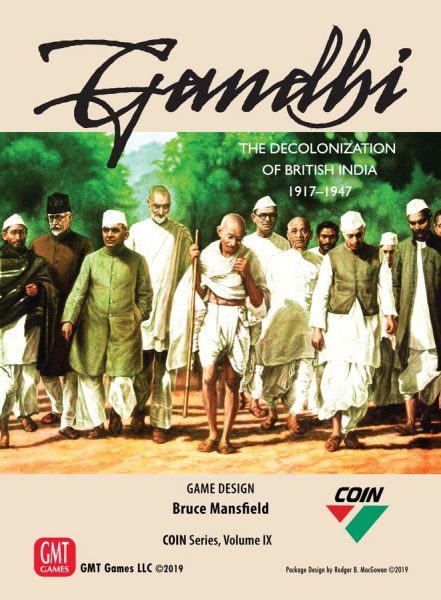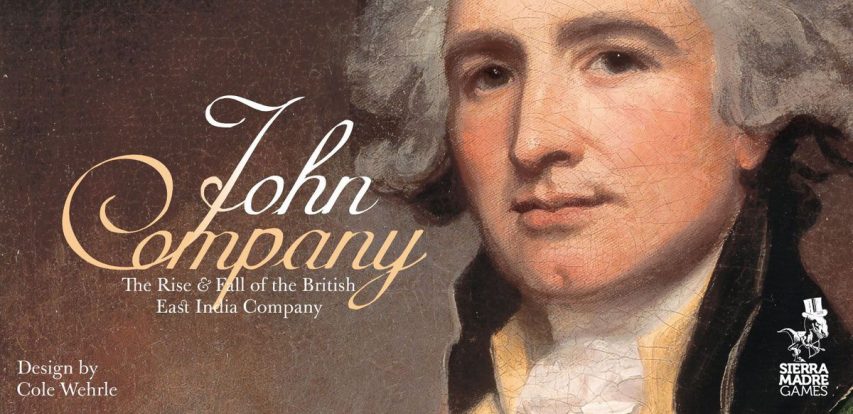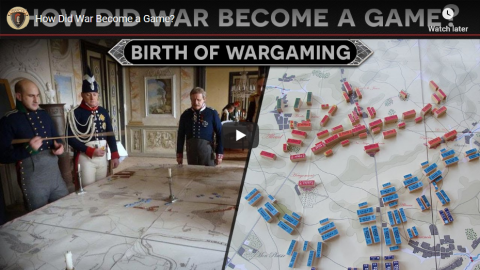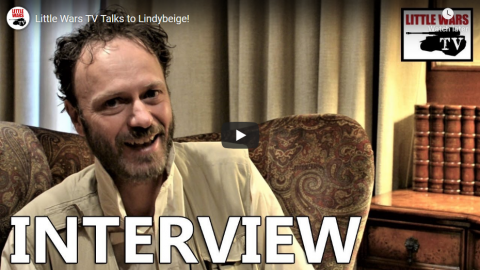From trunk to tail, elephants are a logistics nightmare.
And that begins almost literally at birth. For areas where elephants are native, nature (combined, typically, with the local human terrain) create a local “supply”. In India this meant the elephant forests of North/North-Eastern India; the range of the North African elephant (Loxodonta africana pharaohensis, the most likely source of Ptolemaic and Carthaginian war elephants) is not known. Thus for many elephant-wielding powers, trade was going to always be a key source for the animals – either trade with far away kingdoms (the Seleucids traded with the Mauyran Indian kingdom for their superior Asian elephants) or with thinly ruled peripheral peoples who lived in the forests the elephants were native to.
(We’re about to get into some of the specifics of elephant biology. If you are curious on this topic, I am relying heavily on R. Sukumar, The Asian Elephant: Ecology and Management (1989). I’ve found that information on Asian elephants (Elephas maximus) much easier to come by than information on African elephants (Loxodonta africana and Loxodonta cyclotis).)
In that light, creating a breeding program – as was done with horses – seems like a great idea. Except there is one major problem: a horse requires about four years to reach maturity, a mare gestates a foal in eleven months and can go into heat almost immediately thereafter. By contrast, elephants reach adulthood after seventeen years, take 18-22 months to gestate and female elephants do not typically mate until their calf is weaned, four to five years after its birth. A ruler looking to build a stable of cavalry horses thus may start small and grow rapidly; a ruler looking to build a corps of war elephants is looking at a very slow process. This is compounded by the fact that elephants are notoriously difficult to breed in captivity. There is some speculation that the Seleucids nonetheless attempted this at Apamea, where they based their elephants – in any event, they seem to have remained dependent on imported Indian elephants to maintain the elephant corps. If a self-sustaining elephant breeding program for war elephants was ever created, we do not know about it.
To make matters worse, elephants require massive amounts of food and water. In video-games, this is often represented through a high elephant “upkeep” cost – but this often falls well short of the reality of keeping these animals for war. Let’s take Total War: Rome II as an example: a unit of Roman (auxiliary) African elephants (12 animals), costs 180 upkeep, compared to 90 to 110 upkeep for 80 horses of auxiliary cavalry (there are quite a few types) – so one elephant (with a mahout) costs 15 upkeep against around 1.25 for a horse and rider (a 12:1 ratio). Paradox’s Imperator does something similar, with a single unit of war elephants requiring 1.08 upkeep, compared to just 0.32 for light cavalry; along with this, elephants have a heavy “supply weight” – twice that of an equivalent number of cavalry (so something like a 2:1 or 3:1 ratio of cost).
Believe it or not, this understates just how hungry – and expensive – elephants are. The standard barley ration for a Roman horse was 7kg of barley per day (7 Attic medimnoi per month; Plb. 6.39.12); this would be supplemented by grazing. Estimates for the food requirements of elephants vary widely (in part, it is hard to measure the dietary needs of grazing animals), but elephants require in excess of 1.5% of their body-weight in food per day. Estimates for the dietary requirements of the Asian elephant can range from 135 to 300kg per day in a mix of grazing and fodder – and remember, the preference in war elephants is for large, mature adult males, meaning that most war elephants will be towards the top of this range. Accounting for some grazing (probably significantly less than half of dietary needs) a large adult male elephant is thus likely to need something like 15 to 30 times the food to sustain itself as a stable-fed horse.
In peacetime, these elephants have to be fed and maintained, but on campaign the difficulty of supplying these elephants on the march is layered on top of that. We’ve discussed elsewhere the difficulty in supplying an army with food, but large groups of elephants magnify this problem immensely. The 54 elephants the Seleucids brought to Magnesia might have consumed as much food as 1,000 cavalrymen (that’s a rider, a horse and a servant to tend that horse and its rider).
But that still understates the cost intensity of elephants. Bringing a horse to battle in the ancient world required the horse, a rider and typically a servant (this is neatly implied by the more generous rations to cavalrymen, who would be expected to have a servant to be the horse’s groom, unlike the poorer infantry, see Plb. above). But getting a war elephant to battle was a team effort. Trautmann (2015) notes that elephant stables required riders, drivers, guards, trainers, cooks, feeders, guards, attendants, doctors and specialist foot-chainers (along with specialist hunters to capture the elephants in the first place!). Many of these men were highly trained specialists and thus had to be quite well paid.
Now – and this is important – pre-modern states are not building their militaries from the ground up. What they have is a package of legacy systems. In Rome’s case, the defeat of Carthage in the Second Punic War resulted in Rome having North African allies who already had elephants. Rome could accept those elephant allied troops, or say “no” and probably get nothing to replace them. In that case – if the choice is between “elephants or nothing” – then you take the elephants. What is telling is that – as Rome was able to exert more control over how these regions were exploited – the elephants vanished, presumably as the Romans dismantled or neglected the systems for capturing and training them (which they now controlled directly).
That resolves part of our puzzle: why did the Romans use elephants in the second and early first centuries B.C.? Because they had allies whose own military systems involved elephants. But that leaves the second part of the puzzle – Rome doesn’t simply fail to build an elephant program. Rome absorbs an elephant program and then lets it die. Why?
For states with scarce resources – and all states have scarce resources – using elephants meant not directing those resources (food, money, personnel, time and administrative capacity) for something else. If the elephant had no other value (we’ll look at one other use next week), then developing elephants becomes a simple, if difficult, calculation: are the elephants more likely to win the battle for me than the equivalent resources spent on something else, like cavalry. As we’ve seen above, that boils down to comparisons between having just dozens of elephants or potentially hundreds or thousands of cavalry.
The Romans obviously made the bet that investing in cavalry or infantry was a better use of time, money and resources than investing in elephants, because they thought elephants were unlikely to win battles. Given Rome’s subsequent spectacular battlefield success, it is hard to avoid the conclusion they were right, at least in the Mediterranean context.
Bret Devereaux, “Collections: War Elephants, Part II: Elephants against Wolves”, A Collection of Unmitigated Pedantry, 2019-08-02.
February 13, 2024
QotD: War elephant logistics
May 27, 2023
QotD: The war elephant’s primary weapon was psychological, not physical
The Battle of the Hydaspes (326 BC), which I’ve discussed here is instructive. Porus’ army deployed elephants against Alexander’s infantry – what is useful to note here is that Alexander’s high quality infantry has minimal experience fighting elephants and no special tactics for them. Alexander’s troops remained in close formation (in the Macedonian sarissa phalanx, with supporting light troops) and advanced into the elephant charge (Arr. Anab. 5.17.3) – this is, as we’ll see next time, hardly the right way to fight elephants. And yet – the Macedonian phalanx holds together and triumphs, eventually driving the elephants back into Porus’ infantry (Arr. Anab. 5.17.6-7).
So it is possible – even without special anti-elephant weapons or tactics – for very high quality infantry (and we should be clear about this: Alexander’s phalanx was as battle hardened as troops come) to resist the charge of elephants. Nevertheless, the terror element of the onrush of elephants must be stressed: if being charged by a horse is scary, being charged by a 9ft tall, 4-ton war beast must be truly terrifying.
Yet – in the Mediterranean at least – stories of elephants smashing infantry lines through the pure terror of their onset are actually rare. This point is often obscured by modern treatments of some of the key Romans vs. Elephants battles (Heraclea, Bagradas, etc), which often describe elephants crashing through Roman lines when, in fact, the ancient sources offer a somewhat more careful picture. It also tends to get lost on video-games where the key use of elephants is to rout enemy units through some “terror” ability (as in Rome II: Total War) or to actually massacre the entire force (as in Age of Empires).
At Bagradas (255 B.C. – a rare Carthaginian victory on land in the First Punic War), for instance, Polybius (Plb. 1.34) is clear that the onset of the elephants does not break the Roman lines – if for no other reason than the Romans were ordered quite deep (read: the usual triple Roman infantry line). Instead, the elephants disorder the Roman line. In the spaces between the elephants, the Romans slipped through, but encountered a Carthaginian phalanx still in good order advancing a safe distance behind the elephants and were cut down by the infantry, while those caught in front of the elephants were encircled and routed by the Carthaginian cavalry. What the elephants accomplished was throwing out the Roman fighting formation, leaving the Roman infantry confused and vulnerable to the other arms of the Carthaginian army.
So the value of elephants is less in the shock of their charge as in the disorder that they promote among infantry. As we’ve discussed elsewhere, heavy infantry rely on dense formations to be effective. Elephants, as a weapon-system, break up that formation, forcing infantry to scatter out of the way or separating supporting units, thus rendering the infantry vulnerable. The charge of elephants doesn’t wipe out the infantry, but it renders them vulnerable to other forces – supporting infantry, cavalry – which do.
Elephants could also be used as area denial weapons. One reading of the (admittedly somewhat poor) evidence suggests that this is how Pyrrhus of Epirus used his elephants – to great effect – against the Romans. It is sometimes argued that Pyrrhus essentially created an “articulated phalanx” using lighter infantry and elephants to cover gaps – effectively joints – in his main heavy pike phalanx line. This allowed his phalanx – normally a relatively inflexible formation – to pivot.
This area denial effect was far stronger with cavalry because of how elephants interact with horses. Horses in general – especially horses unfamiliar with elephants – are terrified of the creatures and will generally refuse to go near them. Thus at Ipsus (301 B.C.; Plut. Demetrius 29.3), Demetrius’ Macedonian cavalry is cut off from the battle by Seleucus’ elephants, essentially walled off by the refusal of the horses to advance. This effect can resolved for horses familiarized with elephants prior to battle (something Caesar did prior to the Battle of Thapsus, 46 B.C.), but the concern seems never to totally go away. I don’t think I fully endorse Peter Connolly’s judgment in Greece and Rome At War (1981) that Hellenistic armies (read: post-Alexander armies) used elephants “almost exclusively” for this purpose (elephants often seem positioned against infantry in Hellenistic battle orders), but spoiling enemy cavalry attacks this way was a core use of elephants, if not the primary one.
Bret Devereaux, “Collections: War Elephants, Part I: Battle Pachyderms”, A Collection of Unmitigated Pedantry, 2019-07-26.
April 29, 2023
QotD: The problem of war-elephants
The interest in war elephants, at least in the ancient Mediterranean, is caught in a bit of a conundrum. On the one hand, war elephants are undeniably cool, and so feature heavily in pop-culture (especially video games). In Total War games, elephants are shatteringly powerful units that demand specialized responses. In Paradox’s recent Imperator, elephant units are extremely powerful army components. Film gets in on the act too: Alexander (2004) presents Alexander’s final battle at Hydaspes (326) as a debacle, nearing defeat, at the hands of Porus’ elephants (the historical battle was a far more clear-cut victory, according to the sources). So elephants are awesome.
On the other hand, the Romans spend about 200 years (from c. 264 to 46 B.C.) mopping the floor with armies supported by war elephants – Carthaginian, Seleucid, even Roman ones during the civil wars (Thapsus, 46 B.C.). And before someone asks about Hannibal, remember that while the army Hannibal won with in Italy had almost no war elephants (nearly all of them having been lost in the Alps), the army he lost with at Zama had 80 of them. Romans looking back from the later Imperial period seemed to classify war elephants with scythed chariots and other failed Hellenistic “gimmick” weapons (e.g. Q. Curtius Rufus 9.2.19). Arrian (a Roman general writing in the second century A.D.) dismisses the entire branch as obsolete (Arr. Tact. 19.6) and leaves it out of his tactical manual entirely on those grounds.
This negative opinion in turn seeps into the scholarship on the matter. This is in no small part because the study of Indian history (where war elephants remained common) is so under-served in western academia compared to the study of the Greek and Roman world (where the Romans functionally ended the use of war elephants on the conclusion that they were useless). Trautmann, (2015) notes the almost pathetic under-engagement of classical scholars with this fighting system. Scullard’s The elephant in the Greek and Roman World (1974) remains the standard text in English on the topic some 45 years later, despite fairly huge changes in the study of the Achaemenids, Seleucids, and Carthaginians in that period.
All of which actually makes finding good information on war elephants quite difficult – the cheap sensational stuff often fills in the gaps left by a lack of scholarship. The handful of books on the topic vary significantly in terms of seriousness and reliability.
Bret Devereaux, “Collections: War Elephants, Part I: Battle Pachyderms”, A Collection of Unmitigated Pedantry, 2019-07-26.
March 30, 2023
The use and mis-use of wargames
Cheating in wargames must be approximately five minutes younger than wargames themselves … famously, the Imperial Japanese Navy didn’t like the outcome of wargaming what became the Battle of Midway and “cheated” by refloating the aircraft carriers shown as sunk in the simulation and Wehrmacht General Paulus ran a wargame that showed Operation Barbarossa would fail and he was also told to ignore the results and ended up in Stalingrad. Lessons can be learned from formal wargames, but as CDR Salamander points out, a wargame outcome can be custom-tailored as the leaders require:
One of the things that will get my eye twitching faster than about anything else is when someone responds to a question or concern with a, “Well, in our wargames …”
Bullshit.
That may work for civilians or under-briefed lawmakers who lack the depth in military matters, but anyone who has run or been part of a wargame knows that you can design one to give you the outcomes you want.
Planning assumptions etc … it is all flexible.
Wargames, done right, don’t tell you the future, but they do help inform gaps in your OPLAN, thinking, or expectations of the enemy … and shortfalls you might have.
At the POLMIL level — where our most senior uniformed and civilian leaders live — you have distinctly different concerns than Tactical, Operational, or — if your Planning Confession separates Strategic from the POLMIL level — Strategic level.
For the senior uniformed leader to make this statement, as if it were a bolt out of the blue, is simply gobsmacking;
A “big lesson learned comes out of Ukraine, which is the incredible consumption rates of conventional munitions in what really is a limited regional war,” General Mark Milley, the chairman of the Joint Chiefs of Staff, told the House Armed Services Committee.
“If there was a war on the Korean peninsula or a great power war between United States and Russia, United States and China, those consumption rates would be off the charts,” he said.
Whose charts? Who made them and using what metrics and dataset?
Yes … that is a lesson for most out there … but it should not be for the CJCS. Hell, I remember certain aspects of updating the OPLAN for Korea a quarter century ago when we beat the drum that, “We don’t have enough ____ and only a few days of ____ before we are combat ineffective.”
This. Is. Not. New.
As we mentioned last July, magazine depth has been a chronic shortfall for a long time.
I have trouble believing that the CJCS is shocked, SHOCKED, that this is an issue.
It isn’t a “lesson learned” — it is a lesson ignored.
One of the easiest, most obvious-to-the-accountants economy any military can make is to scrimp on the inventory of live ammunition … if there’s no war, much of the stored munitions must be disposed of at a cost, and what’re the chances they’ll throw a war before the next election? Plus, if there’s only so much in storage, it’s not economical to have the training allowance of ammunition go up, so you can reduce the resupply levels and free up money in the budget for sexier, more mediagenic toys.
December 30, 2022
My Top 10 Favorite Avalon Hill Games
Legendary Tactics
Published 1 Apr 2021Avalon Hill has such a rich history as a board game company, and has contributed so much to our hobby, our sense of history, and our lives. I sat down to reminisce about my top 10 favorite Avalon Hill games of all time. Are these the best games of all time? What games would make your list? Let us know in the comment section below.
(more…)
November 4, 2022
QotD: History while it’s happening
One of the historian’s unique frustrations is: You find some guy’s papers in the archives, and he looks perfect. He’s a nobody — perfect for the man-on-the-street social history we all wish we could do — but he’s a sharp observer, very quotable, has nice handwriting (a real godsend). He’s a compulsive letter-writer, and you see that his papers cover the date of some big event — Ft. Sumter, Pearl Harbor, the Stock Market Crash, whatever. So you eagerly flip to it, and … nothing. The whole world’s going up in flames, and this guy’s talking about baseball or his horse throwing a shoe or something.
Well, future historian, since I know how much that sucks, I’ll spare you. If you’re plowing through my papers (you’re welcome for all the Slave Leia pictures, by the way) and you get to the “Impeachment of Donald Trump” section, you’ll have something. Maybe nothing interesting, or particularly coherent, but at least it’s something. Professional courtesy.
If nothing else, this impeachment fiasco confirms that we’re ruled by fools. No earth-shattering insight, that, I realize, but there it is. Really it’s just math — since most people in all times and places have been fools, it stands to reason that nearly every human who has ever lived has had a large part of his fate decided by an idiot. This is true even of those blessed to have seen good leadership in action, as even the best men are fools about lots of things. Up to and including the things that make their reputations. George Washington, for instance, was indisputably a great leader, but a terrible general — with Cornwallis trapped on the Yorktown peninsula in Virginia, he had to be talked out of moving the Continental Army north, to reconquer New York. He was one of history’s great captains, but I bet I could take him in a game of Risk.
Severian, “Impeachment Thoughts”, Rotten Chestnuts, 2019-12-19.
March 7, 2022
Wargaming the Spanish Civil War
Of all the wars of the 20th century, the Spanish Civil War has to have been one of the most confusing to outsiders at the time and virtually unreadable to moderns who didn’t live through that tumultuous era. I’ve read and enjoyed Orwell’s Homage to Catalonia, but it’s not a history of the whole war: Orwell was an enlisted volunteer who served on a “quiet” sector until he was seriously wounded by a Nationalist sniper. He discusses the situations he encountered personally and avoids, for the most part, editorializing the larger strategic conflict (the TimeGhost team did a pretty helpful video on how the war was triggered that may be informative). As a result of the lack of clarity and the confused narratives, the Spanish Civil War hasn’t been covered in wargames to any great degree, but Jonathan Kay found a scenario for Advanced Squad Leader on part of the conflict that he clearly found intriguing:
The Spanish Civil War was, in human terms, an epic clash of arms: Almost 300,000 combatants are thought to have been killed, as well as more than 150,000 civilians. The conflict also looms large in the history of the 20th century, having been memorably described by U.S. ambassador to Spain Claude Bowers as the “dress rehearsal” for World War II.
Among the idealistic combatants who travelled to Spain to join the fight against fascism were Ernest Hemingway and George Orwell, whose war experiences served to inform, respectively, For Whom the Bell Tolls and Homage to Catalonia. The war also inspired Pablo Picasso’s unsettling surrealist masterpiece Guernica, which depicted the bombing of the Basque town of the same name on April 26, 1937.
All in all, something like 50,000 foreigners assisted the Republican side through the International Brigades — whose Brigada Abraham Lincoln included a Washington Battalion made up of Americans, and a Mackenzie-Papineau Battalion made up of Canadians. At least a quarter of these international volunteers died in combat, but most of the rest went home with frightening stories to tell. Even before the Nazis invaded Poland, the world’s understanding of fascism’s existential threat to humanity was shaped by General Francisco Franco’s successful campaign to topple the Second Spanish Republic.
And yet one thing that the Spanish Civil War has not yielded is a wide array of popular boardgames. This may be partly due to the fact that the conflict was so greatly overshadowed in scale and importance by World War II. But it may also be due to the fact that neither side emerged as sympathetic. As Orwell described in Homage to Catalonia (and as Adam Hochschild described, from a U.S. perspective, in his 2016 book, Spain in Our Hearts: Americans in the Spanish Civil War, 1936–1939), the Republican war effort turned out to be incompetent, fractured, and cynical, with the dominant pro-Stalinist faction eventually turning murderously upon its Trotskyist and anarchist allies. And as late as early March, 1939, just weeks before Franco conquered Madrid and ended the war, Republican forces inside the capital city were engaged in a deadly power struggle within their own ranks. All in all, the many regional and political subplots make the war difficult to model in any kind of conventional wargame (though, of course, this hasn’t stopped numerous game designers from trying).
However, The Beleaguered Capital, HazMo scenario 11, presents a reminder that when Republican and Nationalist forces fought each other in pitched battles, the mode of combat really did offer a preview of World War II, including the use of air power and tanks. (While the only tanks that existed in Spain when the war broke out were a handful of tiny, World War I-era Renault FTs, the Russians sent T-26s to the Republicans while Germany dispatched Pz Is to the Nationalists. In both cases, these vehicles arrived in Spain during the Fall of 1936, just a few months before the December 16 dateline on The Beleaguered Capital.)
February 23, 2022
Peter Cushing (1956)
British Pathé
Published 14 Apr 2013Kensington, London.
M/S of actor Peter Cushing sitting at his desk looking at papers in his hand. He takes a model toy soldier on a horse and compares it with its drawing. He puts it back and takes another toy soldier. C/U of his hand painting a white belt on the little soldier’s uniform. C/U on his eyes as he works — he must have a good eyesight to do this!
Peter Cushing, enthusiastic member of Model Soldier Society, collects, makes and plays with toy soldiers from all periods of military history. He plays with his toys in accordance to the rules laid down by H.G. Wells in his book Little Wars. M/S of Mr Cushing getting off his chair, approaching a little battlefield laid out on the floor. He organises the battlefield to match a map in his hand.
Voiceover tells the audience that many of historical figures played this game, for example Napoleon [obv. not following the rules devised by Mr. Wells]. It engages the mind of a person as much as the game of chess, which means it is not as simple as it looks. M/S of Mr Cushing kneeling on the floor, putting a horse drawn carriage next to a little house. Top panning shot reveals his little battlefield: soldiers, huts, horses, trees, farms …
M/S of Mr Cushing taking a cigarette, putting it in his mouth and lighting it while observing the battlefield. C/U shot of H. G. Wells’ book Little Wars.
A VIDEO FROM BRITISH PATHÉ. EXPLORE OUR ONLINE CHANNEL, BRITISH PATHÉ TV. IT’S FULL OF GREAT DOCUMENTARIES, FASCINATING INTERVIEWS, AND CLASSIC MOVIES. http://www.britishpathe.tv/
British Pathé also represents the Reuters historical collection, which includes more than 136,000 items from the news agencies Gaumont Graphic (1910-1932), Empire News Bulletin (1926-1930), British Paramount (1931-1957), and Gaumont British (1934-1959), as well as Visnews content from 1957 to the end of 1984. All footage can be viewed on the British Pathé website.
H/T to Jon Salway for the link.
May 26, 2021
The Great All-Out Battle – Naval Warfare in the Pacific – WW2 Special
World War Two
Published 25 May 2021Before the infamous day that was Pearl Harbor, US and Japanese military planners worked to envision what a future war in the Pacific would look like. With the entire region now a war zone, it is time to put their theories to the test. Watch the video to find out what these are.
(more…)
May 20, 2021
Men Will Be Boys (1970)
British Pathé
Published 13 Apr 2014Men will be boys. Various locations.
M/S men round lake with boats. C/U man in lake with waders with model boat. C/U another man with model boat. Man lighting boiler. C/U engine working. M/S as model of paddle boat moves through water. M/S paddle boat on water. In foreground a swan. C/U another model boat going through water. M/S pan scale model of Hitler’s yacht. M/S men playing with model cars on race track. C/U cars going round race track. C/U men’s hands on controls. C/U men looking at cars go past. L/S of cars going round race track.
L/S men playing war games with model soldiers. on large table. C/U as man moves soldiers out of line laying them on ground. M/S man moves horses forward. C/U hand placing cannon into position. C/U hand places horse troops in position. M/S lines of soldier. Hand places another in position. M/S of troops being moved.
M/S Mr Victor Martin and wife go through gate by railway crossing dressed up in their uniforms, carrying lamps etc. M/S as they make their way to their signal boxes. C/U railway notice ‘By Midland Railway’. Pa off notice to show Mr Martin approaching his signal box. M/S Martin going into signal box. M/S Mrs Martin going into signal box. C/U Mrs Martin going into signal box. C/U interior. Mr Martin hanging up his jacket inside signal box. He then sits at the controls. C/U signal controls working. C/U of Mr Martin operating signals. Camera zooms back and we see train going past him along track. C/U model train over track. C/U Mrs Martin working in her signal box.
M/S Mrs Martin working signal controls. C/U Mrs Martin. M/S showing trains going over track. C/U trains moving. Camera zooms out to show tracks . C/U trains moving. C/U looking along tunnel showing trains moving. C/U exterior. Signals working. Then camera pans to show where the trains run on an enclosed section out in the open. C/U goods train and passenger train moving. M/S Interior. Trains going over track and Mr Martin at controls.
FILM ID:2241.18A VIDEO FROM BRITISH PATHÉ. EXPLORE OUR ONLINE CHANNEL, BRITISH PATHÉ TV. IT’S FULL OF GREAT DOCUMENTARIES, FASCINATING INTERVIEWS, AND CLASSIC MOVIES. http://www.britishpathe.tv/
FOR LICENSING ENQUIRIES VISIT http://www.britishpathe.com/
British Pathé also represents the Reuters historical collection, which includes more than 136,000 items from the news agencies Gaumont Graphic (1910-1932), Empire News Bulletin (1926-1930), British Paramount (1931-1957), and Gaumont British (1934-1959), as well as Visnews content from 1957 to the end of 1984. All footage can be viewed on the British Pathé website. https://www.britishpathe.com/
July 22, 2020
January 20, 2020
Gaming India’s colonial and post-colonial history
In Quillette, Jonathan Kay looks at two wargames that deal with different aspects of Indian history:
… the peoples whom Europeans encountered in the Americas were skilled and inventive combatants who often put white men to flight (or worse) despite their enormous disadvantage in technology and (ultimately) manpower. In many cases, First Nations (as we now call them in Canada) fought fiercely with one another, too, and had well-developed military traditions that Europeans variously feared, admired and adopted. And they would make fitting protagonists for any modern boardgame designer willing to reject the current fashion of presenting indigenous peoples as holy elves of the forest.
What would such a game look like? A good example comes to us in the form of GMT Games’ 2019 release, Gandhi: The Decolonization of British India. This is the latest entry in GMT’s COIN series, which is designed to model guerrilla wars and other unconventional conflicts through the use of cards that represent historical events. As in other games of the genre, such as Fire in the Lake (Vietnam), People Power (Insurgency in the Philippines, 1983-1986) and Colonial Twilight (The French-Algerian War, 1954-62), the game doesn’t present a simple narrative of good versus evil, but a more complex narrative in which all sides have at least some ulterior motives that are at odds with their official propaganda. In Gandhi, there are four players, one each controlling the Raj, the Indian National Congress, the Muslim League and the “Revolutionaries.” The latter three all share the goal of some kind of national independence, but each pursues its own (often mutually antagonistic) methods, with the Revolutionaries using violence to undercut the more pacifistic Congress, and the Muslim League playing off Congress, the Revolutionaries and the Raj in order to protect the interests of the country’s Islamic minority. (Historians of Canada would note that diplomacy and warfare with and among First Nations often was similarly complex.)
The game is unpredictable and complex, since each player will pursue different strategies in the country’s many different zones, making and breaking de facto partnerships depending on the circumstances. Amid all of this gaming chaos, the moral logic of decolonization remains a central theme of the game. But by the end of things, you realize that the ejection of the British from India was a big and messy project, as history typically is. While Spirit Island was created with the goal of mainlining anti-colonialism directly into the boardgame experience, Gandhi gets to the same theme obliquely by way of amoral realism, doing a better job pedagogically in the process.
A key aspect of Gandhi is that the Raj has agency: It is not reduced to the status of automaton-villain, as in Spirit Island. But there are limitations to the imaginative ecosystem that players inhabit: Every one of the four players has to take on their assigned role without questioning their underlying, game-dictated objective — including the Raj player, who must, start to finish, exert himself in defence of a colonial project that now is widely viewed as being on the wrong side of history. The other three factions likewise remain prisoners of their parochial regional, religious and doctrinal differences, which, historically, would contribute to millions of deaths in the chaos that accompanied the British exit.
Which brings me to the fourth and final colonialism-themed game I will discuss: the acclaimed 2017 release John Company, by Indiana-based designer Cole Wehrle. In theory, John Company is also a game about British colonialism in India. But here’s the rub: The players all act as competing factions within the commercial innards of John Company (a nickname for the British East India Company). On one hand, the players have a co-operative goal — to keep the company afloat as it manages the enormous expense of creating and operating a colonial apparatus on the subcontinent. But I can attest that far more of players’ mental energy goes into fighting each other for the spoils of war and trade. Indeed, much of the game consists of exchanging favours and bribes among players, as each attempts to leverage positions of power within the company to extract revenues, plunder and positions of influence.
As the game progresses, you notice, almost as an afterthought, that great things are afoot within India: New trade routes are created, military battles are fought, whole regions go into revolt and are pacified, with many (fictional) lives hanging in the balance. But as a player, you barely notice any of this — except to the narrow extent these events can be exploited as a source of wealth, since the way you win the game is by accumulating enough cash and baubles to retire your functionaries into gilded clubs and country houses back in England.
And what of the actual Indians who lived and died under the Raj? They don’t appear at all in the game, for John Company‘s real play arc exists within the corrupt solipsism of intra-corporate deal-making. Which sounds horrifyingly amoral. But when the game’s over, you realize: That’s the whole point. The colonialists who ran India — like those who came to North America and every other place on the map, from South America to the Belgian Congo to China — typically weren’t motivated by a desire to destroy and subjugate. They were out to make a buck, either as lone freelancers in a canoe, or bureaucrats pulling levers within some gigantic corporate behemoth. The horrifying, often genocidal murder and mayhem was a by-product of greed. Which doesn’t make it better. But it does make the narrative more comprehensible in regard to governing our future behaviour as human societies — since we all are vulnerable to spasms of greed, while true evil for its own sake is a rare thing.
Games teach you about the forces of history not by listing a set of facts for you to memorize, but by creating a rules system that effectively pushes you to act in a certain way — whether as a colonialist, revolutionary or deity. If the game is well-designed, then those actions make a certain kind of internal sense. That dark logic is what stays with you — as an explanation of why people acted a certain way at a certain time. It’s always easy to judge historical figures. It’s harder, but ultimately more interesting and valuable, to understand them.
September 8, 2019
How Did War Become a Game?
Invicta
Published on 28 Jun 2019Get your first audiobook and two Audible originals when you try Audible for 30 days. Visit https://www.audible.com/Invicta or text “Invicta” to 500 500!
In this video we continue to take a look at the history of Kriegsspiel and explore the early days of wargaming that eventually gave rise to modern table top games such as Warhammer and Dungeons & Dragons.
Research: Jon Peterson
Script: Invicta
Narration: Invicta
Artwork: Gabriel Cassata
Editing: InvictaBibliography
Playing at the World by Jon Peterson
Debugging Game History: A Critical Lexicon by Henry Lowood
War Games: A History of War on Paper by Philipp von Hilgers
Pluie de Balles – Complex Wargames In the Classroom by Jorit Wintjes and, Steffen Pielstrom
September 7, 2019
Little Wars TV Talks to Lindybeige!
Little Wars TV
Published on 23 Jul 2019Nikolas Lloyd, known on YouTube as “Lindybeige,” was a guest speaker at Historicon 2019 and we had the chance to chat with him. His eclectic military history channel is one of our absolute favorites and we had a blast in this wide-ranging interview. We ask him about his favorite generals, how he started wargaming, which Hollywood movie is most faithful to history, and much more!
If you aren’t familiar with the channel, check out Lindybeige here: https://www.youtube.com/user/lindybeige
In this interview, we reference the video “The Wargamers Who Won a Real War,” about the Battle of the Atlantic. You can see that video here: https://www.youtube.com/watch?v=fVet8…
Thanks for watching, and we hope you’ll subscribe here for more of the best historical wargaming videos on YouTube!

